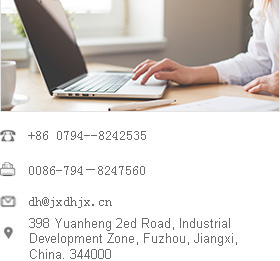
- DHP419 Series of PP Yarn Stretching Machine
- DH419D Series PP FDY Multifilament Spinning Machine HT
- DHP418 Series PP FDY Multifilament Spinning Machine MT
- DHKV 1235-12 Polyester POY Spinning Line
- DHPE Ultra High Molecular Weight Polyethylene Yarn Spinning Equipment
- DHTA Aramid 1414 Yarn Spinning Line


Traditional industries are accelerating their pace to cultivate new types of productive forces
Traditional industries account for as much as 80% of China's industrial structure and are also the foundation for forming new productive forces. However, in the minds of many people, "labor-intensive, high energy consumption and low added value" are also its labels. Today, how can traditional industries move towards the "new" and shed the "traditional" label? Not long ago, a reporter visited Zhejiang Province, where the output value of traditional industries accounts for more than 60%. The textile industry has always been a dominant industry here, forming a modern textile and garment cluster around Hangzhou Bay. Next, we follow the reporter's camera and take a look at the "cocoon breaking" path of traditional industries through "a single thread".
The fabric goes in and the suit comes out. The jacket and trousers are automatically matched in the hanging system. In Ningbo, clothing is produced in this way; By using 3D and programming technologies, the precious fabric that had been lost for a thousand years - Liao Ling - was successfully restored in Haining, Jiaxing with the help of strings of codes. In Paris, France, relying on the new generation of waterless printing and dyeing machines produced in Hangzhou, the staff completed the entire process from design to production of a silk scarf within two hours.
In Zhejiang, the traditional textile industry is becoming less "traditional". Entering the headquarters factory of this enterprise in Hangzhou, the reporter found that most of the workstations in the sales department were empty and the employees were mostly on business trips to handle orders.
Looking at the orders in front of him, the staff member told the reporter that his biggest feeling this year is that traditional textile enterprises are all seeking change, and the enterprises themselves are also the result of change. Although the equipment is selling well now, it was originally just a traditional silk enterprise, and all the printing and dyeing equipment had to be purchased from abroad. The decision to develop and produce printing and dyeing machines was made to solve the long-standing problem of wastewater discharge in the textile printing and dyeing industry.
Not only in Zhejiang, but since the beginning of this year, various regions across China have introduced a series of innovative measures focusing on the transformation and upgrading of traditional industries and the cultivation of new productive forces, and are stimulating new industrial growth drivers through differentiated paths.
In the first quarter, the national fixed asset investment increased by 4.2% year-on-year. Among them, the growth rate of manufacturing investment reached 9.1%, and the investment in technological transformation increased by 7.2%. Traditional industries are rejuvenating through digital and green transformation.
Various regions have also been intensively introducing policy measures to upgrade traditional industries, promoting the industrial chain to leap to the high end. Guangdong Province has proposed to focus on traditional advantageous industries such as petrochemicals, steel, textile and garment, and home appliances and furniture, and carry out "four key actions" including industrial equipment renewal, technological transformation, and digital transformation, promoting over 10,000 industrial enterprises to implement technological transformation. Shandong Province plans to build over 50 national-level smart factories by 2027 and achieve digital transformation of small and medium-sized enterprises relying on industrial Internet platforms. Gansu Province has set up special support funds to guide financial institutions to increase support for traditional industries, and to achieve full-chain transformation by using technologies such as artificial intelligence and big data, thereby enhancing production efficiency and product quality.
Through technological empowerment, green transformation, cluster collaboration and institutional innovation, the potential of traditional industries is constantly being unleashed, providing a solid support for high-quality development.
Declaration: The content of this article is compiled from the Internet and the copyright belongs to the original author. If there is any infringement, please inform us in time and contact us for deletion.







